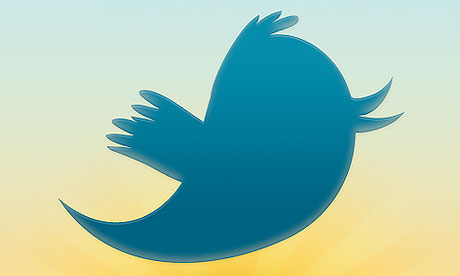 Twitter etiquette is subtle language of behavior that few people speak fluently. It’s understandable, since there is no guidebook you receive when you join, and the rules of Twitter conduct change on a semi-daily basis. It’s been over a year since I got hooked on the beautiful blue bird, and I still commit numerous Twitter faux pas. For my own personal reinforcement, as well as a guide to the uninitiated, I’ve decided to create a series of posts detailing some of the more obscure points of Twitter etiquette.
Twitter etiquette is subtle language of behavior that few people speak fluently. It’s understandable, since there is no guidebook you receive when you join, and the rules of Twitter conduct change on a semi-daily basis. It’s been over a year since I got hooked on the beautiful blue bird, and I still commit numerous Twitter faux pas. For my own personal reinforcement, as well as a guide to the uninitiated, I’ve decided to create a series of posts detailing some of the more obscure points of Twitter etiquette.
The first post in this series deals with following. At its core, Twitter is about following who interests you and being followed by as many people as possible (most people won’t admit this, but everyone wants a massive number of followers. Don’t believe anyone who says otherwise.) This post is not about building up followers; there are already plenty of excellent articles about building up your follower base. This post will focus on how best to comport yourself during the complex kabuki dance of Twitter following.
Rule One: Following is about Respect
The first thing to remember is, because of Twitter lists, that following someone is a symbolic gesture of respect: you don’t need to follow someone to keep track of their tweets. Twitter users who follow only a handful of people can still use their timeline to read tweets, but anything above 150 renders the timeline too crowded and effectively useless. At that point, using lists to group people based on interests becomes a necessity, and it is the first step on the road to Twitter mastery. Twitter lists function just like curated mini-timelines, and there is really no reason not to use them. (If you don’t know how to make Twitter lists, here is a step by step guide.)
The most important thing to remember about lists is that you can pay attention to someone without following them. Because of this, you should treat following as a token of respect, to be reciprocated unless you truly believe that the follower in question does not warrant the kudos that additional followers imply.
So, let’s review. Lists mean you don’t have to follow anyone to pay attention to everyone, so following is done to show respect to fellow Tweeps. If you’ve been talking to the same person for four months and you’ve not followed them, you’re committing a cardinal sin of Twitiquette. Follow that person or don’t fill up their mention tab with your thoughts and questions. If they’ve taken the time to answer your questions, you can take the time to click the follow button.

What have I done to you to Tweet me so disrespectfully?
Rule Two: Never Ask for a Followback
This is a temptation that we all have at some point, but this impulse should be avoided at all costs. Nothing smacks of desperation as much as begging for a follow. Think of it in the same context as going out on a date. Buy a tweep a drink and at least pretend to be interested in what they talk about. Don’t leap out of the gate begging for a follow.
There is a subtle twist to this rule. If you’ve been tweeting with someone for a while and they still have yet to follow you, it’s perfectly reasonable to ask for them to follow you so you can continue the conversation via Direct Message (it’s a courtesy to your mutual followers not to fill up their feed with your Illiad-sized discourses.) I’ve done this many times with people, and it is totally ok. Just make sure that you don’t try to jump straight to DM conversations with strangers. That place is reserved for the most epic of tweeps.

I also love Retweets! That’s so interesting. So…. are you gonna follow me?
Rule Three: Don’t Expect a Followback from Someone You’ve Not Engaged
It’s common knowledge that one of the best ways to gain more followers is to follow people and hope for a followback. Understand if you do this that, unless you have engaged these people in meaningful conversation, they are under no obligation to follow you. An additional follower is usually not enough of a mark of respect to warrant their reciprocity, so don’t be offended if they ignore you. This strategy is how #Teamfollowback builds up their accounts, and such classless forms of network building usually results in people treating you with an equal lack of class.
That’s all I’ve got for now on this subject. If you have any additional suggestions about the subtleties of following on Twitter, let me know and I’ll append additional rules. Twitiquette, like all forms of social conduct, is something of a democratic process: the more people who opine, the more we can all treat each other the way we want to be treated.








Trackbacks/Pingbacks
[…] Following is fraught. Twitter’s simple-on-purpose social interface–you are either following someone’s tweets, which means they visibly populate your feed, or you aren’t, and they don’t–has nevertheless led many a tweeter to obsess about what a follow really means. An endorsement? An expectation? A subscription? It was hard to tell. Well, Twitter has now settled the issue by introducing a feature called “mute.” From now on, what following really means is essentially the same as what friending on Facebook means: absolutely nothing. […]